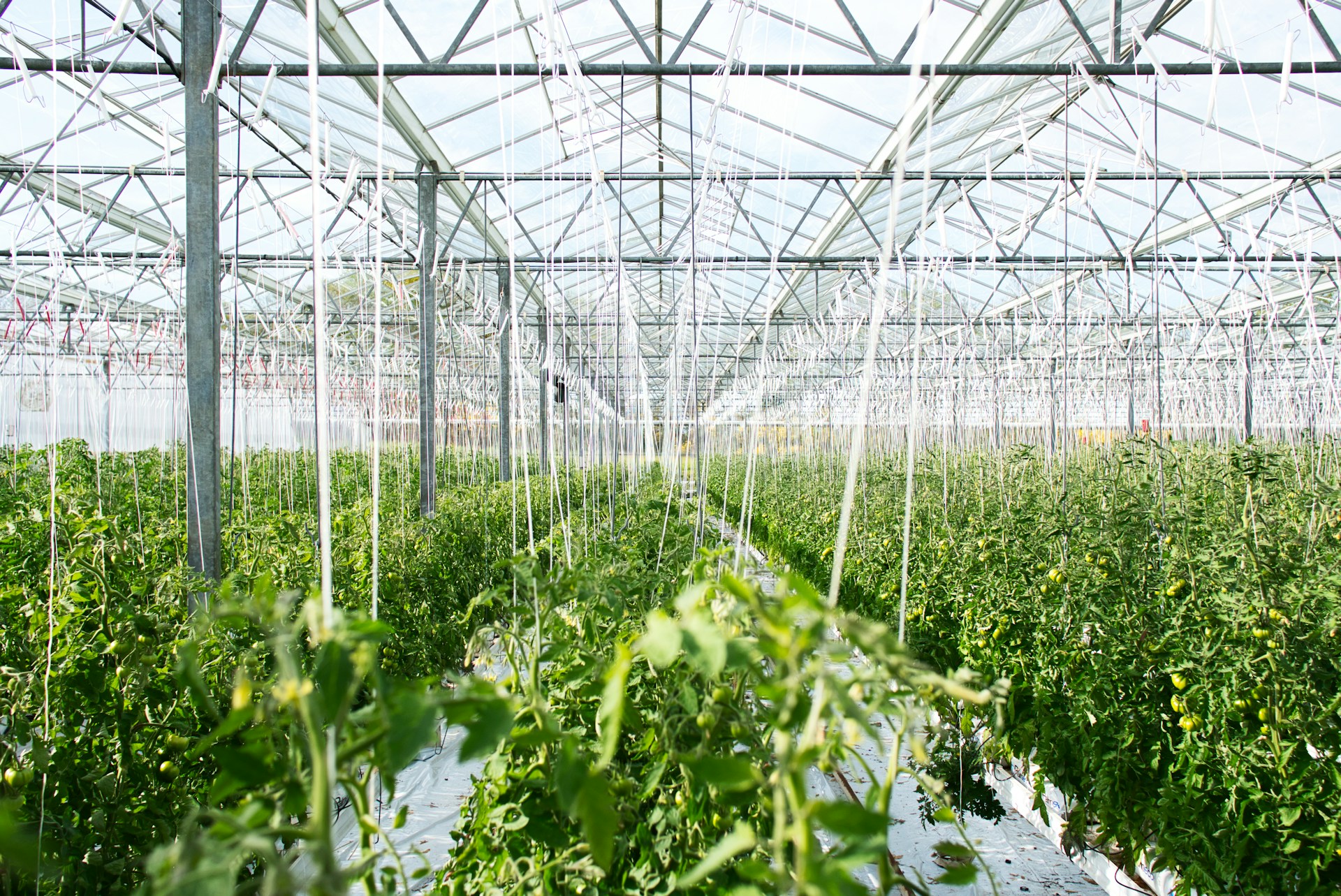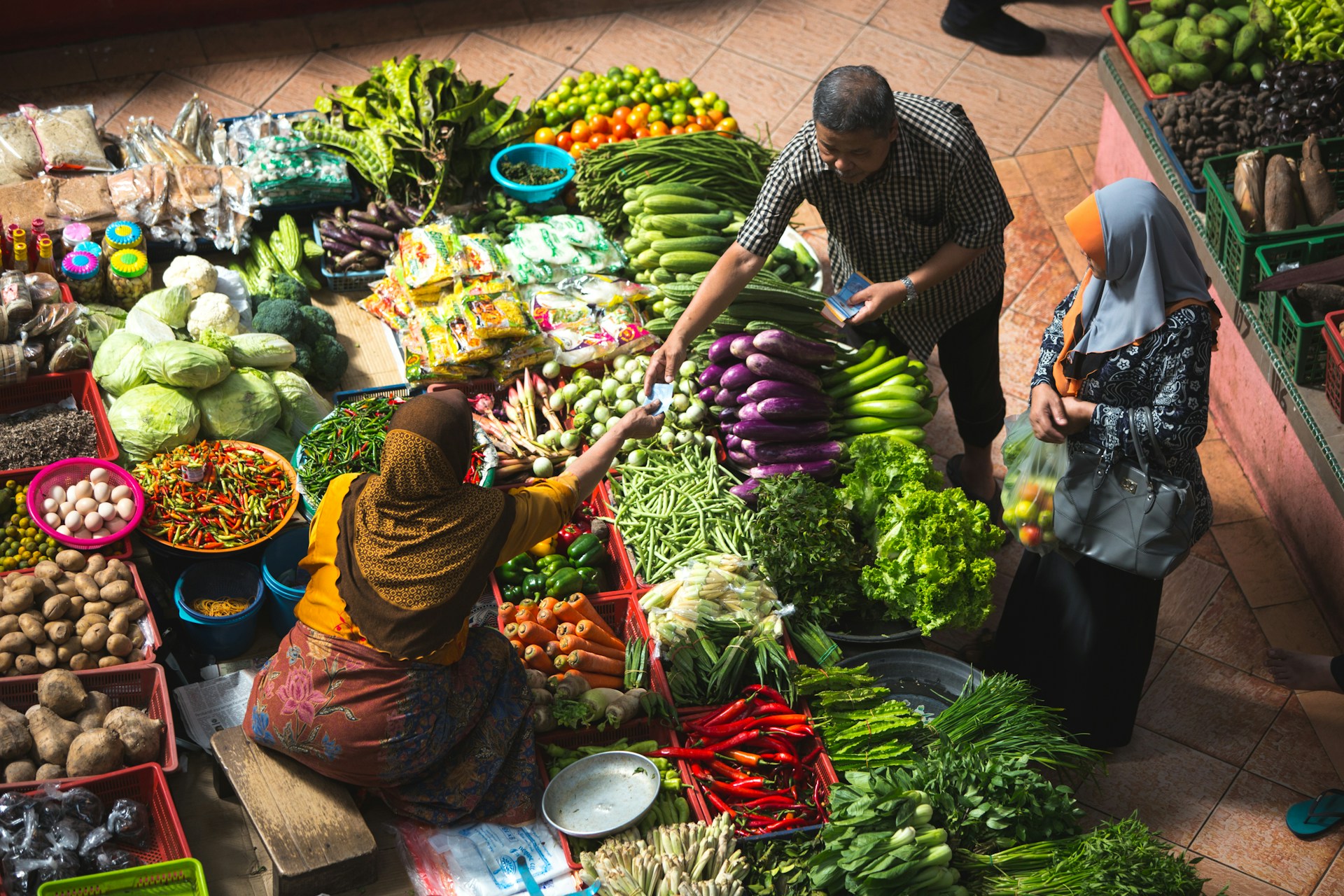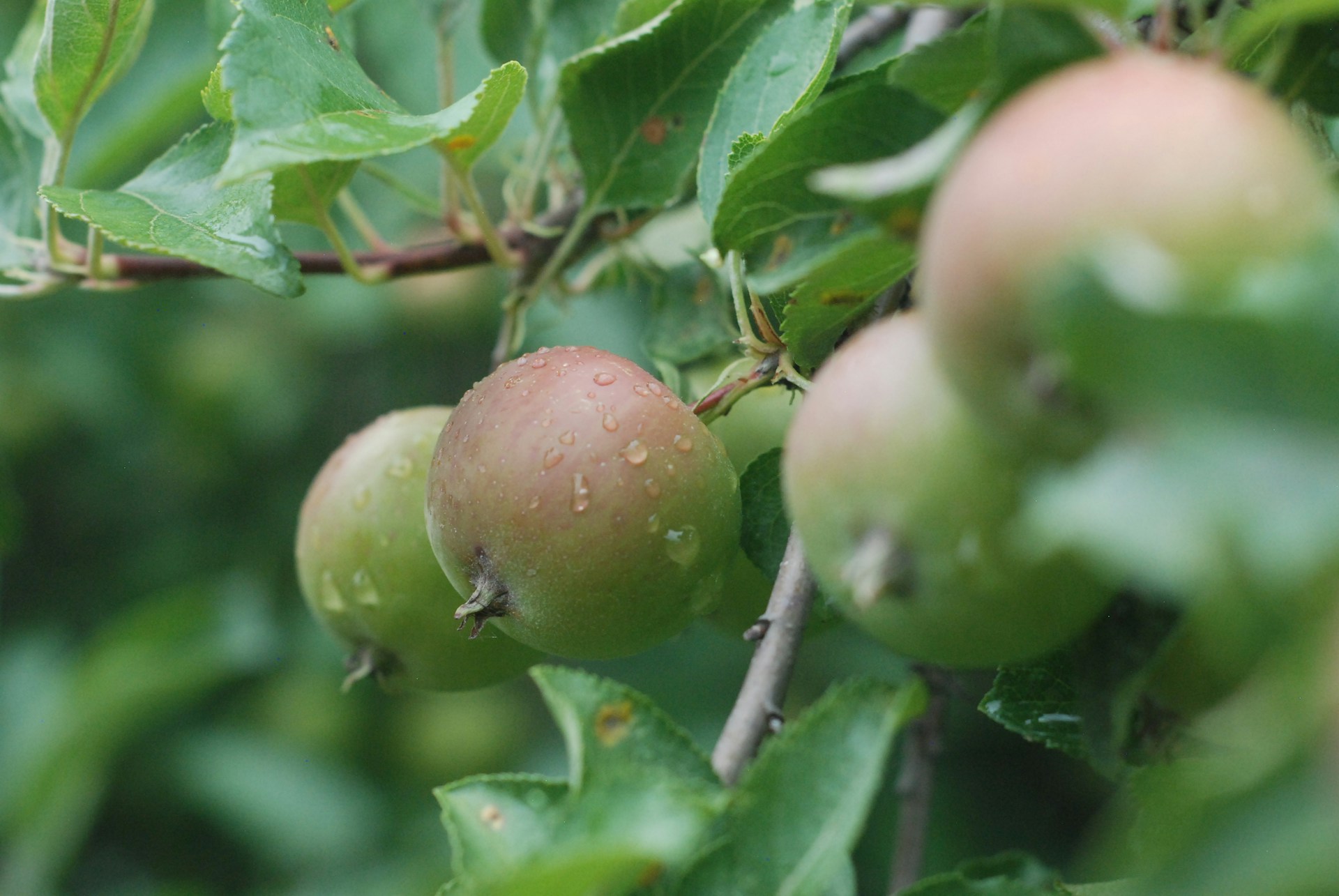As technological development continues to evolve at an unprecedented rate, several sectors are witnessing its significant impact.
Notably, the agriculture industry is undergoing extensive transformation, particularly in produce packing.
In order to maximize efficiency and meet the ever-growing demand, modern-day farming is shifting towards the incorporation of high-tech tools.
From automated picking machines to advanced packing solutions, technology promises to chart a new course in the sector.
This blog post aims to delve into these innovative technologies.
Through detailed exploration, we will highlight the potential enhancements they bring about in the packing of today’s produce.
Contents
- Future Technologies For Produce Packing
- 1. Robotic Automation for Efficient Packing
- 2. Advanced machine learning algorithms for quality control.
- 3. Blockchain Technology for Traceability and Transparency
- 4. IoT-based Smart Packaging Solutions
- 5. Biodegradable packing materials using nanotechnology
- 6. AI-powered Predictive Analysis for Inventory Management
- 7. Augmented Reality for process simulation and training.
- The Bottom Line
Future Technologies For Produce Packing
1. Robotic Automation for Efficient Packing
One of the key areas where future technologies are making significant changes is in the field of robotic automation used for efficient packing.
When it comes to the picking, sorting and packing of produce, the manual process can be time-consuming, labor-intensive and susceptible to human errors
Robotic automation technologies can drastically minimize these challenges offering higher efficiency, precision, and speed.
With rapid technological advancements, packing robots are now being developed with sophisticated mechanisms that can handle even the most delicate produce without damaging it.
Using robotic arms equipped with suction grippers or soft robotic fingers, they can gently pick and pack a wide variety of items, from apples to zucchinis.
Furthermore, these robotic systems can work non-stop, 24/7, thereby considerably boosting productivity levels in packing factories.
It is also possible to program the robots to adhere to the specific packing standards required for different types of produce, thereby ensuring consistent quality in packing.
By working in an automated way, these robots can substantially reduce waste that can occur due to improper handling or packing.
Unlike human workers, robots do not require lunch breaks or days off, and they can maintain their productivity levels regardless of the time of day or weather conditions.
They can also operate in various conditions – including refrigerated or humidity-controlled environments – without any risk to their performance.
One of the major benefits of implementing robotic automation in packing is a significant reduction in the operational costs.
By eliminating the need for manual labor, companies are able to save hefty amounts on spending on wages, training and employee benefits.
Moreover, the introduction of robotic automation in packing processes also leads to better safety in the workplace.
Since robots can take over the heavy-lifting tasks and repetitive movements that could potentially lead to injuries, the risk of workplace incidents is greatly reduced.
Looking towards the future, the use of robotic automation for efficient packing will certainly continue evolving with improvements in AI and machine learning technologies.
This includes the potential for robots that can self-correct their errors, learn from their experiences, and even adapt their operations based on real-time changes in their environment.
Thus, integrating robotic automation in the packing process is not only an investment for the present scenario but also a strategic move towards a future- proof packing operation.
2. Advanced machine learning algorithms for quality control.
The emergence of advanced machine learning algorithms is bringing about a revolution in the packaging industry.
These algorithms aid in performing complex tasks, most notably quality control, with preciseness and at a high speed.
One of the primary uses of machine learning in quality control is recognizing imperfections or deviations in products.
Facilitated by the advancement in image processing techniques, a machine can now be trained to inspect fruits, vegetables and other farm produce for any quality issues.
The machine then flags any product that does not meet the set quality standards, ensuring consistency and maintaining high-quality in the packaging industry.
Moreover, the machine learning system can accurately decipher the subtly different shades of color that indicate the freshness level of a fruit or vegetable.
By this means, the machine learning algorithm aids in determining whether the farm produce is ripe, overripe, or under-ripe, hence making packing more efficient.
The adoption of machine learning in packing industry also reduces the amount of waste produced during packaging processes.
In situations where human involvement could lead to errors, the accuracy brought in by the algorithms minimizes waste and delivers more consistent results.
For example, this technology can ensure that none of the produce packaged is rotten or unhealthy, which would otherwise only be discovered after the package has been delivered to a retail store or to the end customer.
Another advantage of using machine learning in quality control is that it provides real-time insights into the packing processes.
Through its advanced predictive capabilities, the machine learning system can anticipate potential circumstances that could compromise quality and take corrective measures.
Machine learning algorithms, though complex, are customizable depending on the specific needs of an organization.
With continuous plot studying and real-time modifications, machine learning tools can learn the characteristics of high quality farm produce and becomes more adept in quality control over time.
The use of advanced machine learning algorithm has the potential to facilitate a seamless, efficient and high quality packaging of farm produce.
3. Blockchain Technology for Traceability and Transparency
Blockchain technology has undoubtedly risen to prominence in recent years, ushering in a new way to facilitate digital transactions with an extra layer of security.
It has started to make its presence felt in a myriad of sectors, and the produce packing industry is no exception.
As a distributed ledger technology, it accords a breadth of advantages in the sphere of traceability and transparency.
Blockchain’s immutable record-keeping ability means that all transactions are permanently recorded and can be tracked back at any given time.
This creates a “farm to fork” traceability that enhances transparency and builds trust in the supply chain process.
Conventional tracking procedures often fall short due to their insufficiencies in providing real-time updates.
But blockchain technology can significantly alleviate this issue by deploying smart contracts which are automated, self-executing agreements that record data in real-time.
By marrying blockchain’s tamper-proof technology with IoT devices, the sector could have a valuable tool for ensuring the tracking and tracing of goods are not just comprehensive but virtually unhackable as well.
Furthermore, these technological innovations could help to eliminate the inability to identify the cause of product contamination or determine responsibility in recall scenarios.
Yet, for all these beneficial attributes, it is important to remember that blockchain is not a one-size-fits-all solution.
As with any technology, certain challenges may arise from its deployment – regulatory issues, interoperability challenges, and the need for substantial investments to implement the technology across an entire supply chain.
Possibly the most notable challenge would be the possibility of mismatches between the physical product and the virtual data, due to data input errors or fraudulent activities.
This exposes a vulnerability in the system that undermines the robustness and integrity of the blockchain.
Nevertheless, confronting these challenges could bring to fruition a comprehensive, globally connected, and transparent blockchain-based supply chain system.
The ripple effect of this would not only drastically improve efficiency in the produce packing sector but also could foster innovation, stakeholder collaboration, and most importantly, consumer trust.
4. IoT-based Smart Packaging Solutions
The integration of Internet of Things (IoT) technologies in packing, is one of the groundbreaking future technologies in the produce packing industry.
IoT is a network of interconnected devices capable of exchanging and analyzing data, which can be utilized to enhance efficiency, accuracy, and sustainability in produce packing.
Smart packaging solutions that incorporate IoT breathe new life into the traditional produce packing system, entering an age of automation and precision.
The IoT-enabled packaging machinery allows real-time tracking and monitoring, that can significantly improve the quality and speed of the packing process.
The speed and efficiency of packing becomes controllable and predictable, resulting in less waste and increased productivity.
This is achieved by embedding smart sensors into packaging machines which collect useful data including machine performance, temperature, humidity, and other variables that can affect the packing process.
Not just that, smart packaging solutions leverage IoT to enhance customer experience as well.
These smart packaging systems can include features like near field communication (NFC) tags and QR codes, providing customers with detailed information about the product, its origin, and ensures its authenticity.
For instance, a scan using a smartphone can reveal comprehensive information about the produce’s cultivation, harvesting, processing, and transportation details.
This level of information not only increases transparency but also boosts consumers’ trust in the product.
The IoT technology in smart packaging also plays a major role in reducing food wastage by integrating freshness indicators into the packaging.
These indicators can alert consumers and retailers about the remaining shelf life of the produce, or if the product has spoiled, thus, contributing to sustainable consumption.
The application of IoT-based smart packaging is a reflection of the noticeable trend towards digitalization and automation in the produce packing industry.
As the technology matures and becomes more accessible, it will likely lead to a significant shift in how produce packing operates.
Certainly, the integration of IoT technology in the packing process presents immense benefits – from improving operational efficiency to enhancing customer experience and contributing to sustainable consumption.
Ultimately, the ongoing advancements in IoT capabilities will continue to revolutionize the packaging industry, setting the stage for an exciting future adorned with cutting-edge technologies for produce packing.
5. Biodegradable packing materials using nanotechnology
Among the many transformative technologies that will shape the future of produce packing, nanotechnology-based biodegradable materials stand out.
These materials offer an environmentally friendly and sustainable alternative to the traditionally used non-biodegradable plastics.
The increasing number of environmental issues related to non-biodegradable waste has led to an urgent need for alternatives that are not harmful to the environment.
The application of nanotechnology in the development of biodegradable materials for produce packing is a significant leap towards achieving this goal.
This nanotechnology-based solution not only reduces environmental harm, but also improves the overall quality of packaged produce.
Nanotechnology involves manipulating materials on an atomic and molecular scale.
Its application in creating packing materials involves engineering polymer structures that have the ability to decompose naturally in the environment.
As a result, the packing materials break down into their natural elements, causing minimal environmental impact.
Moreover, these biodegradable materials can maintain the quality and freshness of the produce for extended periods of time.
This is because nanotechnology allows the incorporation of antimicrobial elements and other additives that enhance the produce’s storage conditions.
In addition to environmental and quality benefits, these biodegradable packing materials also offer cost and efficiency advantages.
Because they decompose naturally, they eliminate the costs and logistical issues associated with waste management.
Furthermore, the manufacturing process for these nanotechnology-based biodegradable materials can be more efficient and less wasteful than traditional packing material production.
With the myriad of benefits they offer, nanotechnology-based biodegradable materials are poised to revolutionize the field of produce packing.
While the technology is still in its developing stages, the future is promising and it is likely to play a crucial role in the packing industry in the upcoming years.
In the race towards sustainability, embracing such technologies is not just a choice, but an imperative for businesses in the produce packing industry.
6. AI-powered Predictive Analysis for Inventory Management
The incorporation of Artificial Intelligence (AI) in inventory management could reshape the current operations in produce packing.
Produce packing companies need to accurately monitor and manage their inventory to prevent wastage and optimize logistics.
Traditional inventory management inevitably brings with it the human element of error and miscalculations, and this has a significant cost implication.
However, AI-powered predictive analysis can significantly enhance inventory management by predicting future demand and supply gaps by spotting patterns in historical data.
This technology can anticipate future demand and guide management on the ideal levels of inventory.
The precision brought about by AI can eliminate overstocking and understocking, contributing to more efficient and cost-effective inventory management.
Effective predictive analysis models can greatly reduce storage costs by suggesting the optimal quantity of produce to be packed and stored.
This seemingly small conservation of resources in storage and packing can accumulate to a considerable saving for the producer over time, all thanks to AI-powered predictive analysis.
AI can sift through data from different sources like past sales, market trends, and even weather forecasts to provide an accurate projection of demand.
This can help businesses to prepare adequately and avoid wastage resulting from overpacking and overproduction.
In a way, AI-powered predictive analysis factors in the perishable nature of produce, which is a crucial aspect often neglected in traditional inventory management systems.
In this case, anticipative analytics powered by AI can not only predict but prevent inventory spoilage, hence, preventing losses that hit the producer’s bottom line.
AI predictive analysis also allows for real-time tracking and updates on inventory status, providing immediate details on inventory movement and predicting possible shortfalls or excesses.
This technology is not only instrumental in managing inventory but also provides valuable insights that could inform future business strategies.
By identifying patterns and trends, businesses can plan their production, packing, and logistics based on data-driven decisions, as opposed to generic guesses and estimations.
AI-powered predictive analysis for inventory management in produce packing is a prime example of how future technologies can increase efficiency and profitability in the sector.
7. Augmented Reality for process simulation and training.
As technology continuously evolves, the possibilities offered by Augmented Reality (AR) in the field of produce packing become more exciting every day.
AR refers to a technology that superimposes a computer-generated image on the user’s view of the real world, thus providing a composite view.
When used for process simulation and training in produce packing, it can provide a virtual experience of the packing process without the risk or costs associated with physical training scenarios.
This enables workers to learn and improve their packing technique in a controlled and safe environment.
One of the main advantages of AR technology in packing produce is the incredible visualization capabilities it provides.
Trainees can see and ‘touch’ the products, the packing materials, and the equipment they are being trained to use even before they physically handle them.
This is advantageous as it allows workers to acquire a thorough understanding of the process, down to the smallest detail.
AR can also simulate different scenarios, replicating potential problems that may arise during the packing process thereby ensuring the trainees are well equipped to handle any situation.
As an interactive medium, AR can provide instant feedback, giving trainees real-time insight into their performance and progress.
This helps in fine-tuning skills and correcting mistakes, ultimately leading to more proficient packing processes.
Notably, the flexibility of AR allows for remote training, meaning geographic barriers are eliminated and training sessions can be widely accessible.
An interesting application of AR in produce packing is that it can be used to prototype new packing designs and assess their feasibility before real-world implementation.
This speeds up the development process and reduces the costs associated with trial and error during design phases.
Moreover, augmented reality is known for creating engaging experiences, hence, it can increase motivation and collaboration among workers.
Thus, AR represents a tool that not only improves the packing process but also enhances the training experience for the workforce, which is a crucial aspect in the era of advanced technology.
On the other hand, AR also faces challenges such as high development costs, technical limitations and the need for users to be comfortable with technology-based solutions, however, the potential rewards in terms of increased efficiency, quality control and safety may far outweigh these drawbacks.
The Bottom Line
Enhancing the efficiency and effectiveness of the packaging industry requires the adoption of advanced techniques and technologies.
Robotic automation and machine learning algorithms greatly contribute to efficient packing and quality control.
Simultaneously, blockchain technology ensures traceability and transparency in operations, while IoT-based smart packaging solutions aim to re-imagine the entire packaging process.
Moreover, the integration of nanotechnology to produce biodegradable packing materials demonstrates a leap towards environmentally friendly practices.
AI-powered predictive analysis tools significantly improve inventory management and augmented reality paves the way for optimized process simulation and training.
Incorporating these dynamic technologies is essential in keeping up with the fast-paced evolution of the packaging industry.




